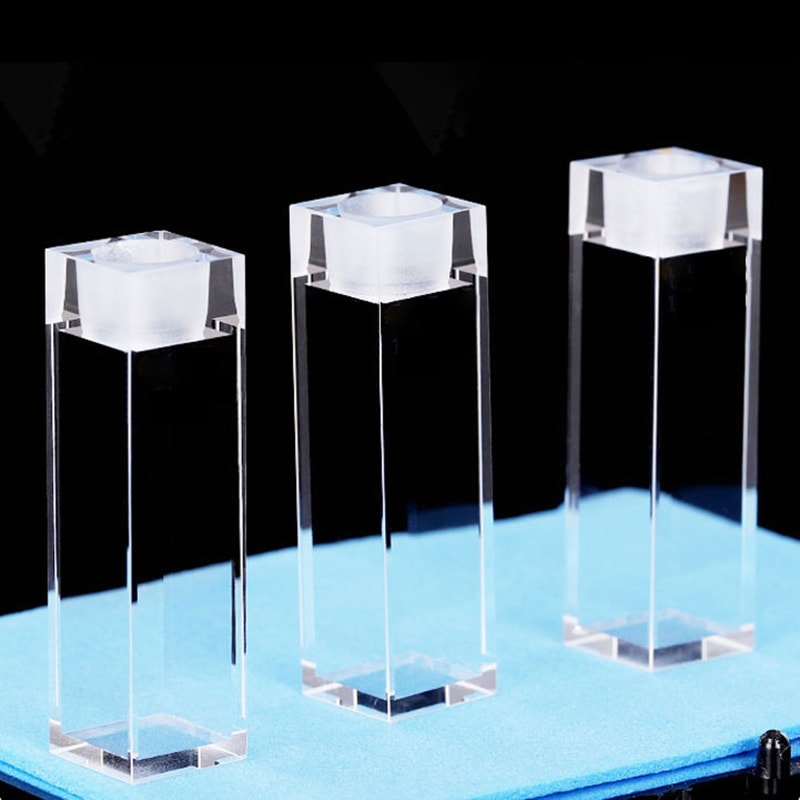Why Quartz Vials Are Suitable for Chemical and Scientific Experiments
Why Quartz Vials Are Suitable for Chemical and Scientific Experiments
Blog Article

The Advantages of Cuvettes and Quartz Vials in Scientific Study
In medical research, the accuracy and consistency of dimensions are paramount, specially in fields like spectroscopy, compound evaluation, and biology. One critical factor that ensures detail in these studies could be the cuvette, specially quartz vials. Knowledge the advantages of cuvettes and the features of using quartz vials can significantly affect the outcome of studies and lab work.
Precision in Spectroscopy
Cuvettes are crucial for holding fluid products in a variety of logical instruments, most notably spectrophotometers. These devices measure the absorbance or sign of gentle through a sample, and the cuvette acts whilst the package for the sample throughout analysis. The measurement and material of the cuvette enjoy an essential role in ensuring the reliability of the measurements. Quartz vials, specifically, present excellent visual clarity, allowing for accurate gentle transmission across a wide selection of wavelengths, including uv (UV) light. This makes quartz vials an excellent choice for spectroscopic studies, wherever accuracy is critical.
Longevity and Substance Opposition
Quartz vials be noticeable due to their durability and opposition to severe chemicals. Unlike plastic cuvettes, quartz vials are less inclined to weaken or respond with chemicals in the sample, ensuring that the results of the test stay unaffected by potential contamination. This characteristic makes quartz vials particularly helpful in conditions where intense solvents or high temperatures are involved. Their ability to withstand intense problems without diminishing the reliability of the test is one of the major reasons they're favored in several laboratory applications.
Precision in Size and Shape
The size of a cuvette is not really a one-size-fits-all situation. The dimension of the cuvette, such as for example its journey period, impacts the volume of the sample and the total amount of mild that passes through. Picking the right cuvette size for the specific test assures that the results are not manipulated because of below or over-concentration of the sample. Quartz vials come in a variety of measurements and forms, allowing analysts to choose the most correct solution based on the needs of these experiment. That mobility plays a role in more correct knowledge and makes for greater control over experimental conditions.
Transparency and Light Transmission
Quartz is noted for its exceptional visibility, particularly in the ultraviolet (UV) and apparent mild spectra. This makes quartz vials well suited for use in tools that need clear visual trails, such as for instance UV-Vis spectrophotometers. The remarkable mild transmission houses of quartz make certain that the mild goes through the taste with small scattering or assimilation, ultimately causing more correct readings. For experiments that demand large precision, quartz vials offer a distinct advantage over different materials.
Long-Term Stability
When working in research labs, it is essential to own trusted resources that maintain their strength over time. Quartz vials are not only chemically immune but additionally very resilient, meaning they are less likely to experience use and tear. This long-term stability guarantees that scientists may use quartz vials for extensive periods without fretting about degradation or the requirement for repeated replacements, adding to cost-effectiveness in the extended run.
In summary, both cuvettes and quartz vials provide a range of advantages that enhance the product quality and accuracy of laboratory experiments. From their superior optical clarity for their substance resistance and longevity, these resources are essential in scientific research. By selecting the right cuvette size and applying quartz vials, researchers can guarantee specific sizes and achieve more trusted effects in their studies. Report this page